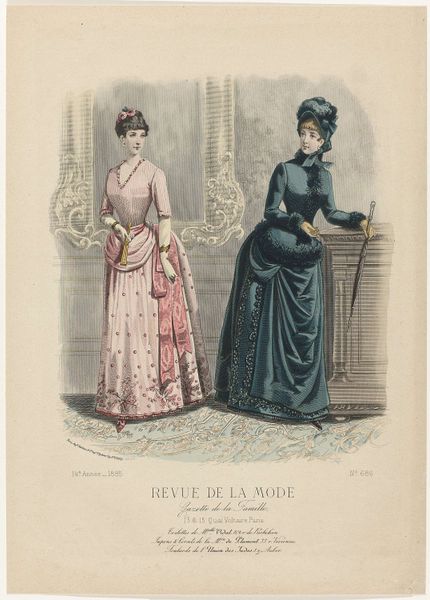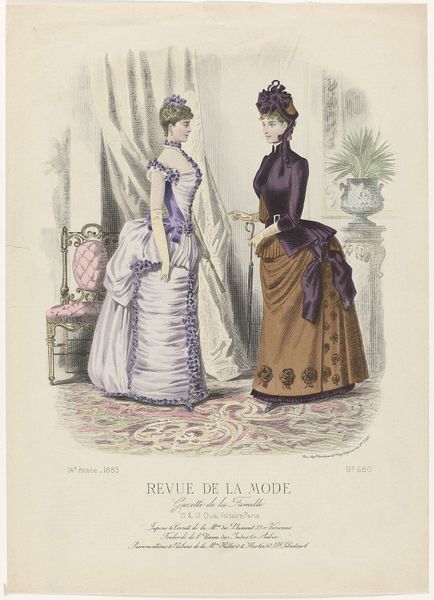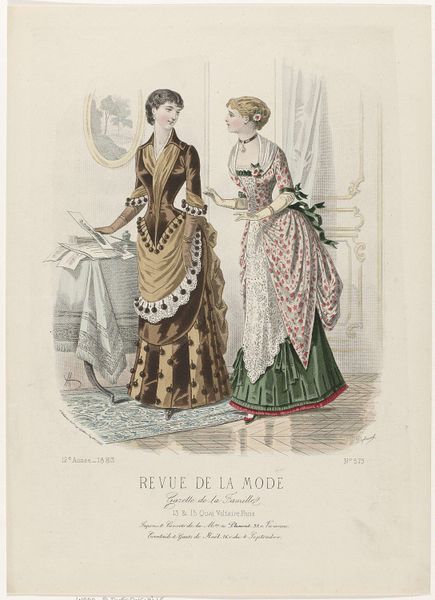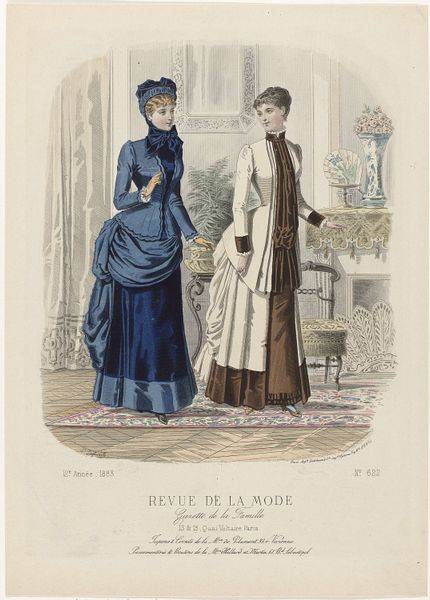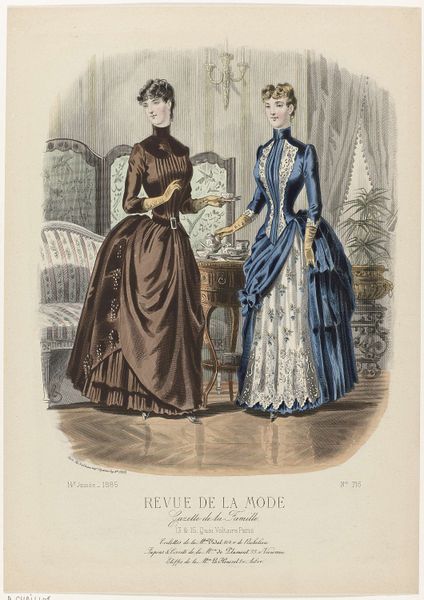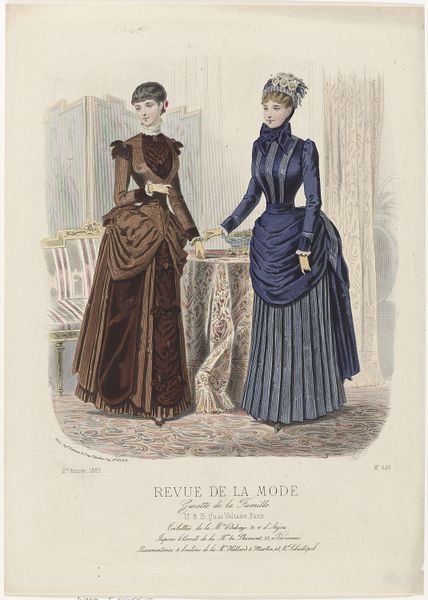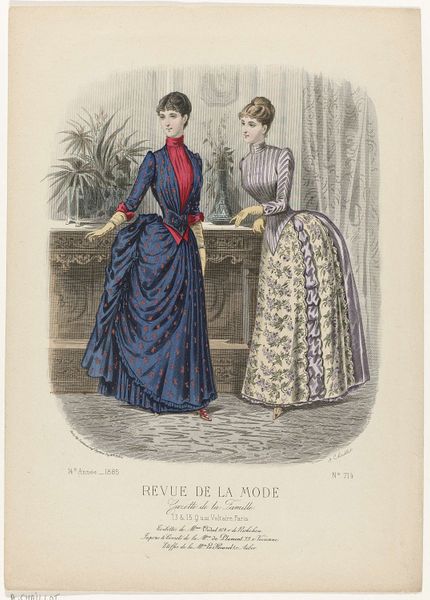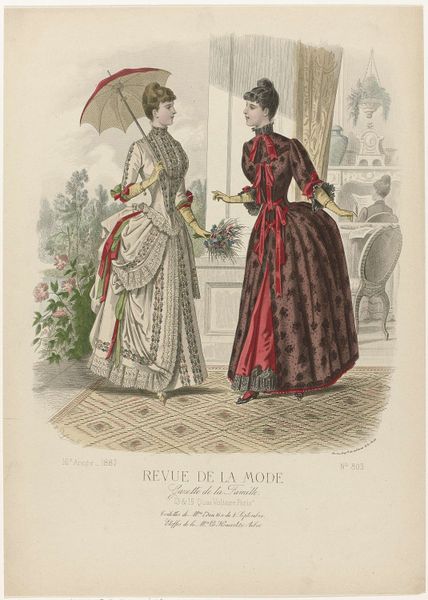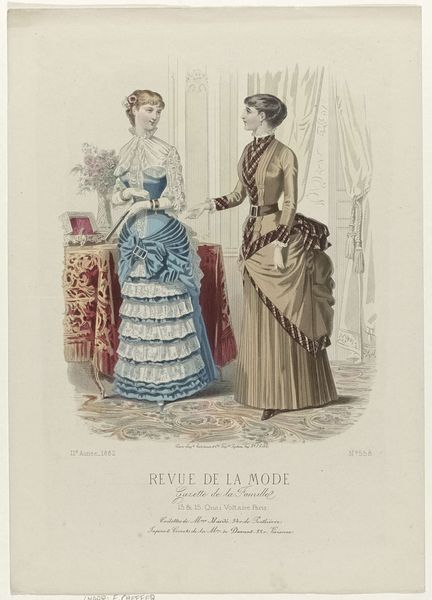
Revue de la Mode, Gazette de la Famille,dimanche 27 mai 1883, 12e annee, No. 595: Toilettes de M.me Glad (...) 1883
0:00
0:00
Dimensions: height 375 mm, width 268 mm
Copyright: Rijks Museum: Open Domain
Editor: So, this is a print from 1883, an image from the "Revue de la Mode, Gazette de la Famille." It features two women modeling different dress styles of the period. What strikes me is how meticulously detailed the fabrics are rendered. What are your initial thoughts on this image? Curator: From a materialist perspective, it’s fascinating. Look at how the printmaking process allows for a democratization of fashion. These images weren’t just about aesthetics; they were a crucial part of a larger economic system of textile production and consumption. Consider the labor involved in creating the dresses themselves, and then replicating them as prints for mass distribution. Editor: That's interesting. I hadn’t really thought about it in terms of mass distribution. Do you think that changes how we should view the print? Curator: Absolutely! Think about the intended audience – primarily women. This image isn't simply displaying wealth, it is actively shaping desires and driving consumption. Each line, each fold, and embellishment shown would influence what materials were in demand, shaping not just fashion trends but also the textile industry's labor practices. The printing process itself becomes an integral part of that system. What can we deduce about these practices from the garments in the illustration? Editor: The fabrics seem luxurious. Maybe silk, and the lace details. Were those materials becoming more accessible during this time, driving down costs? Curator: Precisely! Or conversely, consider who could afford such dresses and accessories. The 'democratisation' that was referred to previously should not lead to romantic views regarding actual accessibility across all classes. In examining materiality here, one is then directed back to class-related and socio-economic themes... Editor: Right. So, seeing it as a material document gives a lot of insight into the period, more than just saying "pretty dresses." It connects art, labor and the economy. Curator: Exactly. It compels us to ask: Who is profiting from this image, who is making these textiles, and who gets to wear these beautiful gowns?
Comments
No comments
Be the first to comment and join the conversation on the ultimate creative platform.


